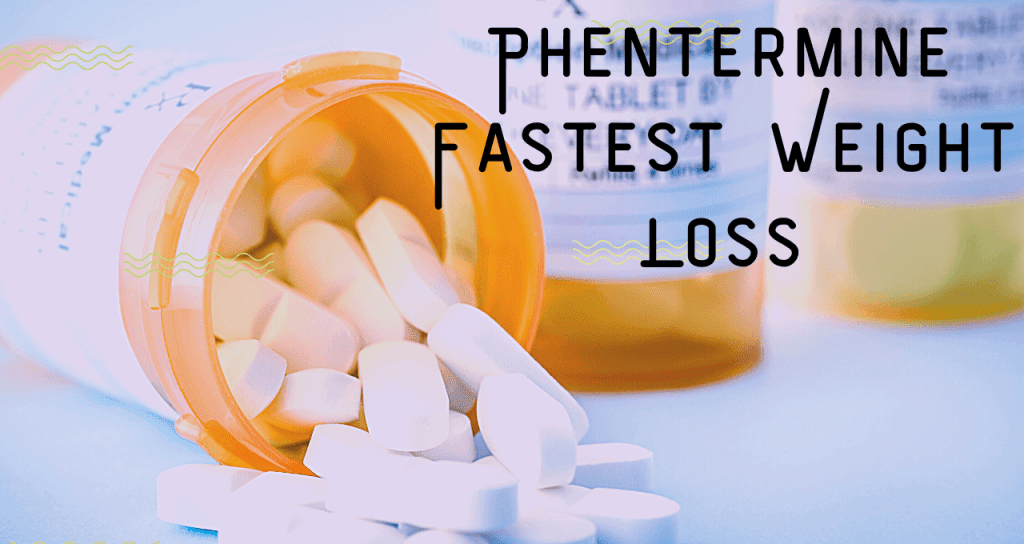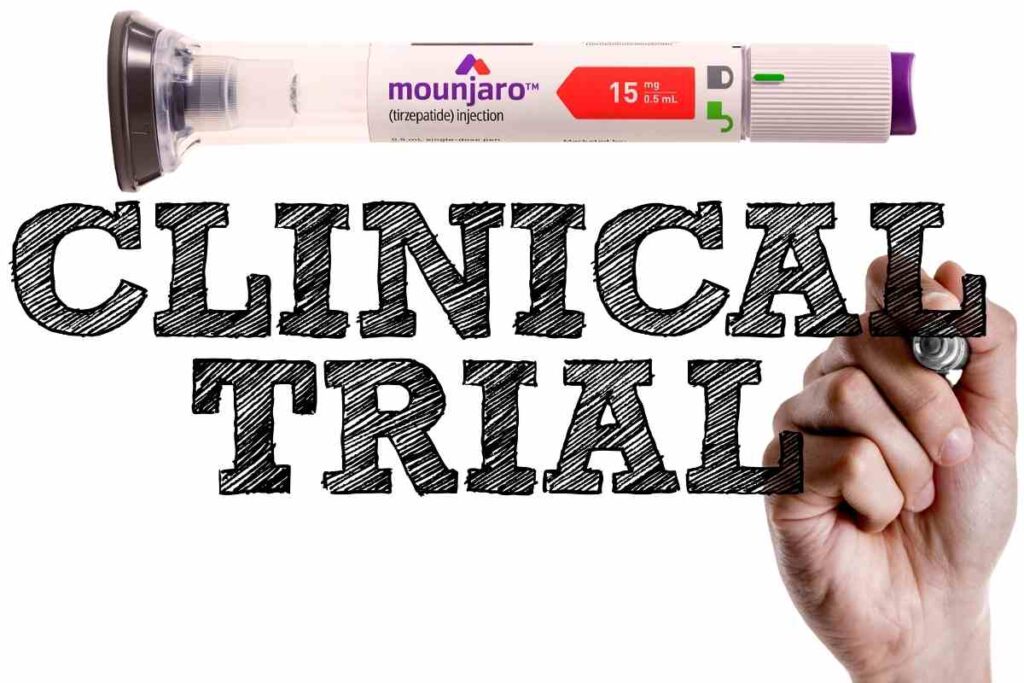Hot to take phentermine 37.5 for best results
How to take phentermine 37.5 for Best resultsIntroduction to How to take phentermine 37.5 for best resultsPhentermine 37.5 should be taken exactly as prescribed by your doctor. Generally, it is taken once a day in the morning, about 30 minutes before breakfast or 1-2 hours after breakfast. Taking it before breakfast may maximize its effectiveness, but it’s essential to follow your doctor’s specific instructions for dosing and timing.Avoid taking Phentermine 37.5 in the evening or close to bedtime to prevent insomnia and other sleep disturbances. It is crucial to follow the dosing schedule provided by your healthcare provider to ensure the medication’s safe and effective use.Remember that the recommended dosage and timing may vary from person to person based on individual health conditions and needs. Always consult your doctor before making any changes to your dosing or timing. It’s important to use Phentermine 37.5 as directed to achieve the best results and minimize the risk of side effects.Phentermine Dosages for Weight Loss: Your GoodRx GuideWhen it comes to weight loss, finding the right medication and dosage is crucial. Phentermine is a popular prescription medication used to aid weight loss by suppressing appetite and boosting energy levels. Finding the right Phentermine dosage for your body and weight loss goals can be a game changer in your journey to a healthier you. In this guide, we’ll explore the different Phentermine dosages available and how to effectively use this medication as a tool for weight loss. Whether you’re new to Phentermine or looking to adjust your current dosage, this GoodRx guide will provide you with the information you need to make informed decisions about your weight loss journey.How to use Phentermine HCLPhentermine HCL should only be used as prescribed by your doctor, taking into consideration your age, medical condition, and how you respond to the medication. Typically, Phentermine HCL is taken once a day with breakfast. It is important not to crush or chew sustained-release capsules, as this can affect the way the medication is released in your body.Swallow the medication whole with a full glass of water and take it at the same time each day to get the most benefit. It is important to not increase your dose, take it more often, or use it for longer than prescribed. If you have any questions about the dosage or administration of Phentermine HCL, be sure to consult your doctor or pharmacist.Always read and follow the medication guide provided with Phentermine HCL. If you have any concerns or experience any adverse effects while using the medication, contact your healthcare provider immediately.Proper Use of Phentermine tabletsPhentermine is a prescription weight loss medication that works by suppressing the appetite and boosting energy levels. When used properly, Phentermine can be an effective tool in conjunction with diet and exercise to help people achieve their weight loss goals. However, it’s important to use Phentermine tablets as directed by a healthcare professional to avoid potential side effects and to maximize its benefits. Understanding the proper use of Phentermine tablets is crucial for safe and effective weight loss.DescriptionsPhentermine Hydrochloride Tablet, USP is available in oral dosage form. It contains the active ingredient Phentermine Hydrochloride, which is a sympathomimetic amine anorectic. The chemical composition of Phentermine Hydrochloride Tablet, USP is C10H15N•HCl.Phentermine Hydrochloride is sparingly soluble in water and ethanol. The tablet is typically white or off-white in color, round in shape, and may have a score line for ease of splitting. The tablet may also be imprinted with a specific identification code.In addition to the active ingredient, the tablet also contains inactive ingredients such as lactose monohydrate, magnesium stearate, microcrystalline cellulose, pregelatinized starch, and sucrose. These inactive ingredients contribute to the physical characteristics of the tablet and help in its formulation.Overall, Phentermine Hydrochloride Tablet, USP is available in oral dosage form and contains the active ingredient Phentermine Hydrochloride. It is sparingly soluble in water and ethanol, and its physical characteristics include a white or off-white color, round shape, and specific identification markings. Its formulation includes various inactive ingredients to aid in its production and stability.DosingOptions for Obesity Treatment:The dosing options for the treatment of obesity include various dosage forms such as oral tablets, capsules, and injections. The recommended doses and administration timings vary depending on the specific medication and the individual’s weight management plan.For adults, the recommended dose for oral medications is usually once daily, with or without food, while some injectable medications may be administered weekly. The specific dosage form and strength will determine the exact recommended dose, which can range from 1-3 capsules or tablets per day.For children, the recommended doses are determined based on their age, weight, and the specific medication prescribed by a healthcare professional. It is important to consult with a healthcare provider to determine the appropriate dosage for children.The maximum dosage and frequency of use for weight loss medications are typically outlined in the prescribing information. It is important to adhere to the recommended maximum dosage and frequency to avoid potential side effects and adverse reactions. The timing of medication administration in relation to meals may also vary, with some medications being taken before, during, or after meals.In summary, the dosing options for obesity treatment depend on the specific medication, and it is important to follow the recommended doses and administration timings provided by a healthcare professional.Specific UsesPhentermine is a medication used to aid weight loss in individuals who are obese or have weight-related medical problems. It is available in various dosage forms, including capsules, tablets, and extended-release capsules, and should be taken as directed by a healthcare provider. The typical adult dose is 8 mg to 37.5 mg once daily, with or without food.It is crucial to follow the dosing instructions for the specific form of phentermine being used, as well as to adhere to a reduced-calorie diet plan and regular exercise program. The combination of medication, diet, and exercise is essential for achieving successful weight loss. Before starting an exercise program, it is important to consult with a doctor to ensure
More About Hair Loss
When Minoxidil should be avoidedOral minoxidil should be avoided in individuals with a history of drug allergies, as they may be at increased risk of experiencing adverse reactions to the medication. Additionally, those with pheochromocytoma, a rare tumor of the adrenal gland, should not use oral minoxidil due to the potential for severe complications. Patients with severe hepatic impairment should also avoid oral minoxidil, as the medication can further exacerbate liver problems. Furthermore, individuals with heart-related issues, such as untreated or uncontrolled high blood pressure or a history of myocardial infarction, should not take oral minoxidil, as it can potentially worsen these conditions.The potential risks and complications associated with using oral minoxidil in these cases include severe allergic reactions, exacerbation of pheochromocytoma leading to hypertensive crisis, further damage to the liver, and worsening of heart-related issues. Other potential side effects of oral minoxidil can include fluid retention, electrolyte imbalances, and rapid heartbeat. It is important for individuals with these health conditions to discuss alternative treatment options with their healthcare provider to avoid these potential risks and complications associated with oral minoxidil.How do I prepare to start oral Minoxidil?Before starting oral Minoxidil, it is essential to inform your doctor about all the medications you are currently taking, including over-the-counter drugs and supplements. This is particularly important if you are already on medications that lower blood pressure, as oral Minoxidil can further reduce blood pressure.Obtaining an at-home blood pressure monitor is crucial for monitoring your blood pressure and heart rate regularly. Take readings before starting the treatment and keep a weekly chart to track any changes. It is important to bring this chart with you to your doctor appointments so that your healthcare provider can assess the effects of oral Minoxidil on your blood pressure and heart rate.By accurately documenting your readings and maintaining communication with your doctor, you can ensure that oral Minoxidil is safe and effective for you. Remember to regularly discuss any concerns or potential side effects with your doctor to ensure the best possible outcome from your treatment.Types of hair loss treated with oral minoxidilOral minoxidil is used to treat various types of non-scarring hair loss, including androgenetic alopecia, telogen effluvium, alopecia areata, chemotherapy-induced alopecia, and traction alopecia.Androgenetic alopecia, also known as male or female pattern baldness, is the most common type of hair loss. Oral minoxidil can help stimulate hair growth and prevent further hair loss in individuals with this condition.Telogen effluvium is a type of hair loss characterized by excessive shedding due to stress, illness, or hormonal changes. Oral minoxidil can help promote hair regrowth and reduce the shedding associated with this condition.Alopecia areata is an autoimmune condition that causes patchy hair loss. Oral minoxidil can be used to stimulate hair regrowth in affected areas and improve the overall appearance of the hair.Chemotherapy-induced alopecia is a type of hair loss that occurs as a side effect of cancer treatment. Oral minoxidil can help promote hair regrowth in individuals undergoing chemotherapy.Traction alopecia is a form of hair loss caused by prolonged tension on the hair follicles, often due to hairstyles such as tight ponytails or braids. Oral minoxidil can help stimulate hair growth and improve the condition of the affected areas.In conclusion, oral minoxidil can be used to treat various types of non-scarring hair loss by promoting hair regrowth and reducing further hair loss in individuals with androgenetic alopecia, telogen effluvium, alopecia areata, chemotherapy-induced alopecia, and traction alopecia.Androgenetic alopecia (also known as male or female pattern baldness)Androgenetic alopecia, commonly known as male or female pattern baldness, is a condition characterized by progressive thinning and loss of hair, typically on the scalp. In men, this condition often causes a receding hairline and balding at the crown, while in women, it leads to a widening of the part and overall thinning of the hair.The primary cause of androgenetic alopecia is the influence of androgens, specifically dihydrotestosterone (DHT), on hair follicles. Genetic factors play a significant role in determining an individual’s sensitivity to androgens, while hormonal imbalances can also contribute to the development of this condition.In men, the symptoms of androgenetic alopecia typically start with a receding hairline and thinning at the crown, eventually leading to partial or complete baldness. Women may experience a diffuse thinning of hair across the scalp. The progression of this condition varies among individuals and can be influenced by genetic and hormonal factors.Diagnosing androgenetic alopecia involves a medical history assessment, scalp examination, and sometimes blood tests to rule out other potential causes of hair loss. Identifying the pattern of hair loss and understanding the patient’s family history are essential in determining the presence of androgenetic alopecia in both men and women.Telogen effluvium (stress-or-illness-related hair loss)Telogen effluvium (TE) is a type of non-scarring alopecia, commonly associated with stress or illness. Treatment options for TE include addressing the underlying cause, such as reducing stress or treating any underlying medical conditions. In chronic telogen effluvium (CTE), where excessive hair shedding persists for more than 6 months, oral minoxidil has been studied as a potential treatment option.A retrospective study published in the Journal of the American Academy of Dermatology found that patients with CTE who were treated with oral minoxidil experienced a significant reduction in hair shedding. The dosage of oral minoxidil used in the study was 0.25 to 5 mg daily. Patients reported improvements in hair density and overall hair condition.However, it is important to note that oral minoxidil can have potential side effects, including hypotension, tachycardia, and fluid retention. Therefore, it is crucial for patients to be monitored closely by a healthcare professional while using oral minoxidil for CTE.In conclusion, while addressing the underlying cause of TE is important, oral minoxidil may be a viable treatment option for patients with CTE experiencing persistent hair shedding. It is essential for patients to carefully weigh the potential benefits and risks of using oral minoxidil and to consult with a healthcare professional before starting this treatment.Hair loss due to chemotherapyHair loss due to chemotherapy can be a distressing side
Mounjaro Side Effects
Mounjaro Side EffectsIntroduction: Mounjaro Side EffectsMounjaro, a commonly prescribed medication, may lead to common side effects such as nausea, diarrhea, decreased appetite, vomiting, constipation, dyspepsia, and abdominal pain. These side effects can significantly affect patients’ quality of life. Nausea, vomiting, and decreased appetite can lead to weight loss and malnutrition, while diarrhea and constipation can cause discomfort and disrupt daily activities. Patients should stay hydrated and eat small, frequent meals to manage these side effects. They can also try over-the-counter medications like antacids for dyspepsia and anti-diarrheal agents for diarrhea. Patients must communicate any severe or ongoing side effects to their healthcare provider to explore potential adjustments to the medication regimen. By staying informed and proactive, patients can effectively manage the common side effects of Mounjaro and improve their overall treatment experience.More common side effects of MounjaroIn addition to the common side effects of Mounjaro, such as nausea, vomiting, and fatigue, other potential side effects need to be taken into consideration. Some users of Mounjaro have reported experiencing severe abdominal pain, which may indicate a more serious underlying issue and should be promptly addressed by a healthcare professional. Furthermore, Mounjaro has been associated with an increased risk of gallbladder problems, including gallstones and inflammation of the gallbladder, which can cause significant discomfort and may require medical intervention.Other potential side effects of Mounjaro that should be monitored include liver problems, such as jaundice and elevated liver enzymes, as well as an increased risk of blood clots and stroke. It is important for individuals taking Mounjaro to be aware of these potential side effects and to seek medical attention if they experience any concerning symptoms. It is also advisable to regularly monitor liver function and other relevant health indicators while taking Mounjaro.Precautions for MounjaroWhen considering taking Mounjaro, it is crucial to discuss potential risks and precautions with your doctor before starting the medication. This includes informing your doctor of any existing medical conditions, medications, or allergies. It is important to start at the lowest effective dose and gradually adjust the dosage as needed, under the guidance of a healthcare professional.Furthermore, it is essential to closely monitor any potential side effects and seek immediate medical attention if any severe symptoms occur. Common side effects of Mounjaro may include nausea, dizziness, or headache, but more serious side effects such as difficulty breathing, chest pain, or severe allergic reactions require immediate medical attention.In addition, if you are taking other medications, your doctor may need to adjust the dosage or closely monitor for any potential drug interactions. Following these precautions and closely working with your doctor can help ensure that Mounjaro is used safely and effectively.Mild side effects of MounjaroMounjaro is a popular medication used to treat various conditions, but like all medications, it can come with some mild side effects. It’s important to be aware of these potential side effects so you can monitor your health while taking Mounjaro and seek medical attention if necessary. Understanding what to expect can help ease any concerns or anxieties about taking this medication. Below are some of the mild side effects commonly associated with Mounjaro.# Nauseaand vomiting while taking Mounjaro.Common side effects associated with Mounjaro may include nausea and vomiting. The manufacturer recommends managing these symptoms by taking Mounjaro with food and plenty of water to help alleviate stomach upset. They also suggest avoiding spicy or greasy foods, as well as alcohol, which can exacerbate nausea and vomiting. If symptoms persist, it is advised to contact a healthcare professional for further guidance.Nausea and vomiting while taking Mounjaro typically occur within the first few weeks of starting the medication, as the body adjusts to the new medication. Over time, the body may adapt to these side effects, and they may lessen or disappear altogether.If nausea and vomiting persist or become severe, it is important to seek medical attention. Additionally, if severe stomach pain develops alongside nausea and vomiting, it is recommended to consult a healthcare professional promptly.In conclusion, when taking Mounjaro, it is common to experience nausea and vomiting as side effects. By following the manufacturer’s recommendations for managing these symptoms and seeking medical attention if necessary, individuals can effectively address these side effects.# DiarrheaWhen managing diarrhea while taking Mounjaro, it is important to drink plenty of water and clear fluids to prevent dehydration. Dehydration can occur due to the increased fluid loss associated with diarrhea. It is crucial to keep the body hydrated by consuming water, clear soups, and electrolyte-replenishing drinks. Additionally, avoiding caffeinated and alcoholic beverages is recommended as they can aggravate diarrhea.Common side effects of Mounjaro related to its impact on the digestive system include nausea, vomiting, and abdominal discomfort. Diarrhea can also lead to weight loss and difficulty in stabilizing blood sugar levels. These side effects can contribute to digestive discomfort and may require adjustments in diet and medication management.In summary, managing diarrhea while taking Mounjaro involves staying hydrated by drinking plenty of water and clear fluids, while also being mindful of other potential side effects such as nausea, vomiting, and abdominal discomfort. It is important to consult a healthcare professional if the symptoms persist or worsen.# Decreased appetiteThe side effect of decreased appetite with Mounjaro can have a significant impact on managing blood sugar levels and weight loss goals for individuals using this medication. Decreased appetite can lead to lower food intake, which in turn can help to control blood sugar levels and support weight loss efforts.The mechanism by which Mounjaro leads to decreased appetite and weight loss is not entirely understood, but it is believed to involve changes in the brain’s regulation of hunger and satiety. This can result in a reduced desire for food and ultimately lead to weight loss.When experiencing decreased appetite, it is important to consult with a dietitian to ensure that nutritional needs are still being met despite reduced food intake. A dietitian can help to develop a nutritious eating plan that accommodates the decreased appetite and supports overall health and wellness.In conclusion, while decreased appetite as a
Liraglutide side effects
Liraglutide side effectsIntroduction to Liraglutide Side effectsIn clinical trials, Semaglutide has demonstrated superior weight loss efficacy compared to Liraglutide. In a study of overweight or obese participants, Semaglutide resulted in an average weight loss of 15.3% at a dose of 2.4 mg, while Liraglutide achieved an average weight loss of 7.8% at a dose of 3 mg. The primary endpoint for Semaglutide was the percentage change in body weight from baseline, whereas, for Liraglutide, it was the proportion of participants achieving at least 5% weight loss. Secondary endpoints for both medications included changes in waist circumference, body mass index, and other metabolic markers.In terms of dosage, Semaglutide is administered once weekly at doses of 0.25 mg, 0.5 mg, 1.0 mg, and 2.4 mg, while Liraglutide is administered once daily at a dose of 3 mg. Both medications may cause gastrointestinal side effects such as nausea, vomiting, and diarrhea, with a slightly higher incidence reported with Semaglutide.Mechanistically, Semaglutide and Liraglutide are both glucagon-like peptide-1 (GLP-1) receptor agonists, but Semaglutide has been modified to have a longer half-life and increased binding affinity, potentially contributing to its greater weight loss efficacy. In conclusion, Semaglutide appears to induce more weight loss compared to Liraglutide based on clinical trial results, dosage, and potential side effects.Liraglutide Side EffectsLiraglutide is a medication used to treat type 2 diabetes and obesity. Like all medications, it can come with potential side effects that patients should be aware of. Understanding the possible side effects of liraglutide can help patients make informed decisions about their treatment and be prepared for any potential adverse reactions. Here are some common side effects of liraglutide to be aware of.# More commonsymptoms and side effects associated with chronic weight management. These can include back pain, belching, decreased appetite, stomach cramps, and weight loss. Other common symptoms may include fatigue, headaches, constipation, dizziness, and muscle weakness. Additionally, individuals may experience mood swings, dehydration, gallstones, and nutrient deficiencies.Chronic weight management can lead to a variety of physical and emotional side effects as the body adjusts to changes in diet, exercise, and overall lifestyle. It’s important to address these symptoms and side effects with a healthcare professional to ensure proper management and support for long-term weight maintenance. Seeking professional advice and guidance can help individuals navigate the challenges and potential side effects associated with chronic weight management.# Less commonside effects of the medication and provide a brief description of each.Less common side effects of this medication may include bleeding, blistering, burning, and swelling at the injection site. These symptoms are not commonly reported, but they can occur in some individuals after receiving the injection. Bleeding at the injection site may result in prolonged oozing or the formation of a hematoma. Blistering can present as small, fluid-filled pockets on the skin, while burning may cause discomfort and redness at the injection site. Swelling can occur as a result of inflammation or an allergic reaction to the medication.Other uncommon reactions to the medication may include dizziness, headache, nausea, and fatigue. These symptoms are less frequently observed but should still be monitored after receiving the injection. Dizziness and headache may indicate a neurological response, while nausea and fatigue may be a sign of a systemic reaction to the medication.It is important to be aware of these less common side effects and to seek medical attention if they persist or worsen after receiving the injection.# RareSymptoms and Their Potential Impact on an Individual’s Health and Well-beingRare symptoms associated with a certain condition may include large hive-like swelling, seizures, and loss of consciousness. These symptoms can have a significant impact on an individual’s health and well-being.Large hive-like swellings can be indicative of a severe allergic reaction, and if left untreated, it can lead to anaphylaxis, a life-threatening condition that can result in difficulty breathing and a drop in blood pressure. Seizures, on the other hand, can disrupt a person’s daily activities and put them at risk for injury. Loss of consciousness, especially if prolonged, can also be a cause for concern as it may indicate a serious underlying health issue.The potential impact of these rare symptoms on an individual’s health and well-being can be severe. It can lead to physical injury, emotional distress, and even death in extreme cases. Additionally, these symptoms can significantly reduce a person’s quality of life, affecting their ability to work, engage in social activities, and perform daily tasks.Overall, it is important for individuals experiencing rare symptoms to seek medical attention promptly in order to address the underlying condition and prevent any further impact on their health and well-being.# Drug InteractionsVICTOZA and Saxenda, both liraglutide-based medications, may have potential drug interactions with other medications. These drugs can impact gastric emptying and the absorption of oral medications, leading to changes in the effectiveness of other drugs. It is important to be cautious when administering VICTOZA or Saxenda with other medications, especially in pediatric patients.When these medications are used in combination with insulin secretagogues or other antidiabetic therapies, there is an increased risk of hypoglycemia. This is because VICTOZA and Saxenda work to lower blood sugar levels by stimulating insulin secretion and may enhance the effects of other antidiabetic drugs. Therefore, precautions need to be taken when using these medications together to avoid the risk of hypoglycemia.Monitoring measures should be employed when concomitantly administering VICTOZA or Saxenda with other medications, especially in pediatric patients. It is crucial to closely monitor blood glucose levels to ensure they remain within the target range and to adjust the dosages of other medications as needed.In conclusion, when using VICTOZA or Saxenda, healthcare providers should be vigilant for potential drug interactions, particularly with medications impacting gastric emptying, and carefully monitor for the risk of hypoglycemia when using them alongside insulin secretagogues or other antidiabetic therapies.# Other InteractionsVictoza (Liraglutide) may interact with other drugs, so it’s important to consult with a healthcare professional before starting it alongside other medications. Victoza can slow down stomach emptying, affecting the absorption of other oral medications. Caution should be exercised
Contrave Side Effects
Contrave Side EffectsIntroduction to Contrave Side EffectsContrave is typically started with one tablet in the morning for the first week, followed by an increase to one tablet in the morning and one tablet in the evening in the second week. The recommended maximum daily dose is two tablets in the morning and two tablets in the evening.When using Contrave, it is important to swallow the tablet whole with a glass of water and not cut, chew, or crush the tablets. It is also crucial to follow the provided instructions and use Contrave until your doctor advises you to stop.For individuals with liver or kidney problems, it is essential to consult with a healthcare professional before starting Contrave. Your doctor may need to adjust the dosage or closely monitor your condition while using Contrave.Always seek your doctor’s advice regarding the correct dose and duration of treatment with Contrave to ensure the best results and minimize the risk of side effects.Contrave Side EffectsCommon side effects of Contrave include nausea, constipation, headache, vomiting, dizziness, insomnia, dry mouth, and diarrhea. More serious side effects that may occur include allergic reactions such as rash, itching, swelling, severe dizziness, and trouble breathing.Contrave has also been associated with neuropsychiatric adverse events, such as suicidal thoughts or actions, anxiety, depression, and other mood changes. It may also increase the risk of seizures, as well as an increase in blood pressure and heart rate. Other possible side effects of Contrave include fatigue, urinary tract infections, and shakiness. It is important to seek medical attention if experiencing any of these side effects while taking Contrave.Contrave WarningsWarnings and Precautions:1. Medical Conditions and Medication Interactions: Contrave may interact with certain medical conditions and medications, including seizures, liver or kidney problems, eating disorders, and opioid medications. It is important to inform your doctor of all your medical conditions and medications before starting Contrave.2. Pregnancy and Allergies: Contrave should not be used during pregnancy or by individuals with a history of allergic reactions to Bupropion or Naltrexone. If you are pregnant or planning to become pregnant, it is crucial to discuss alternative treatment options with your doctor.3. Mental Health History: Individuals with a history of mental health conditions, such as depression or bipolar disorder, should use Contrave with caution. Close monitoring by a healthcare professional is essential to ensure the medication does not exacerbate existing mental health symptoms.4. Suicidal Thoughts and Actions: Contrave, like other medications containing Bupropion, may increase the risk of suicidal thoughts and actions, especially in young adults. It is crucial to monitor for any changes in mood or behavior and seek immediate medical attention if any concerning symptoms arise.5. Regular Check-ups: Regular check-ups with a doctor are important while taking Contrave to monitor for any potential side effects or interactions. It is important to follow up with your healthcare provider to ensure the medication is safe and effective for your individual needs.Contrave PrecautionsThis medication has been associated with an increased risk of suicidal behavior and ideation, especially in young adults and adolescents. It is important to closely monitor for any signs of worsening depression or unusual changes in behavior while taking this medication and to seek immediate medical attention if any such symptoms occur.Patients should also be aware of the potential for allergic reactions and serious skin reactions while taking this medication. It is important to report any signs of rash, itching, swelling, or difficulty breathing to a healthcare provider immediately.Regular blood pressure monitoring is advised while taking this medication, as it may cause an increase in blood pressure. Patients should also discuss all other medications, including over-the-counter and herbal supplements, with a doctor before starting this medication to ensure there are no potential interactions.Overall, it is important to take these precautions seriously and to communicate with a healthcare provider about any concerns or side effects experienced while taking this medication.Contrave InteractionsContrave, a combination of bupropion and naltrexone, has the potential for various drug interactions. When combined with alcohol, Contrave can increase the risk of seizures due to bupropion’s effects on the central nervous system. Additionally, the use of opioid medications with Contrave can also increase the risk of seizures, as well as respiratory depression and sedation. Therefore, caution should be exercised when using Contrave alongside opioids.In vitro assessments have shown that bupropion is a moderate inhibitor of CYP2D6 and CYP2B6, while naltrexone is a moderate inhibitor of CYP2D6. This can lead to potential interactions with medications metabolized by these CYP isoforms, which may result in altered drug levels in the body.Specific drugs to avoid while taking Contrave include monoamine oxidase inhibitors, as well as other weight-loss products containing bupropion or naltrexone. Furthermore, it is recommended to avoid consuming high-fat foods, as they may increase the risk of gastrointestinal adverse effects.Overall, it is important to discuss all current medications and potential interactions with a healthcare professional before starting Contrave. Additionally, caution should be exercised when consuming alcohol or using opioid medications while on Contrave.Contrave OverdoseAn overdose of Contrave, which contains the active ingredient bupropion, can lead to severe symptoms such as seizures, convulsions, coma, respiratory failure, and even death. Additionally, an overdose of bupropion can result in potential serious reactions such as hallucinations, loss of consciousness, mental status changes, and cardiac issues. The maximum recommended dosage of Contrave is 32 mg/360 mg (naltrexone/bupropion) daily. It is crucial to seek immediate emergency medical care if an overdose of Contrave is suspected to prevent any serious or life-threatening complications. If someone is experiencing symptoms of a Contrave or bupropion overdose, it is essential to contact medical professionals or emergency services right away. Prompt medical attention is necessary to address the effects of an overdose and prevent any further harm. Understanding the potential risks of an overdose and being aware of the symptoms can help ensure that appropriate medical care is sought in a timely manner.Contrave AllergiesIt is important to inform your healthcare professional about any history of allergic reactions to medications, including bupropion, before starting Contrave. Additionally, be sure to discuss









